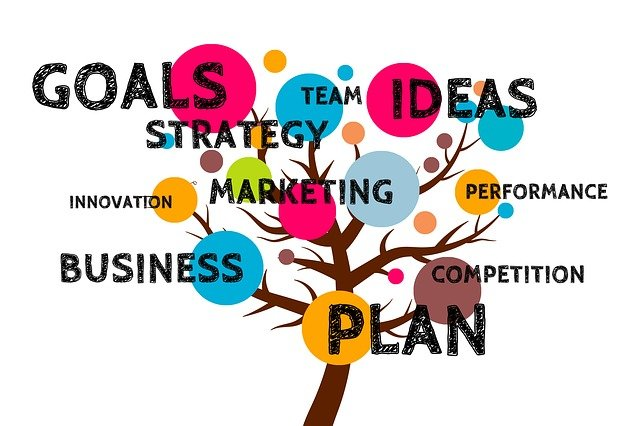What is the link between Talent Management and Organisation Design & Development?
In order for a business to be successful, it needs to adopt robust talent management strategies (e.g. succession planning, creating talent pools, effectively managing talent, regular performance management, employee retention, and employee engagement), to ensure that the right talent is in the right place at the right time. This requires effective talent management practices, as well as an organisational design and development strategy that will support the growth of the company. In this article we will explore the link between talent management and organisational design and development, and discuss how each can impact the other.
What is Strategic Talent Management?

Talent management is the process of recruiting, developing, and retaining employees who have the potential to be high performers. This includes identifying individuals with the right skills and abilities for specific roles, as well as providing them with opportunities to grow and develop within the company. Talent management is a key part of any organisation’s strategy, as it helps to ensure that the right people are in place to drive competitive advantage.
What is an example of Talent Management?
One example of talent management is succession planning. This is the process of identifying and developing individuals who have the potential to fill key roles in the future. Succession planning helps to ensure that there is a talent pipeline in place, so that when vacancies do arise, there are people with the right skills and experience ready to step into those roles.
What are the 4 areas of talent management?
The four main areas of talent management are:
- – Recruitment and selection
- – Training and development to ensure needed skills are in place
- – Performance management so that business demands are met
- – Engaged employees to join the conversation of business growth and success
What is the difference between Talent Management and Human Resource Management?
Human resource management (HRM) is the process of managing an organisation’s employees. This includes recruiting, selecting, training, and developing employees, as well as managing their performance and engagement. Talent management is a subset of HRM, and focuses specifically on recruiting, developing, and retaining high-performing employees.
What is Succession Planning?

Succession planning is the process of identifying and developing individuals who have the potential to fill key roles within an organisation. This includes identifying new talent, as well as providing them with opportunities to grow and develop their skills. Succession planning is a critical part of any talent management strategy, as it helps to ensure that the right people are in place to meet the organisation’s future needs.
What are the steps in succession planning?
There are four main steps in succession planning:
- – Identify talent in order to assess who has the potential to fill future roles
- – Provide opportunities for talent to grow and develop their skills
- – Assess talent regularly in order to identify any gaps or areas for improvement
- – Have a plan in place so that when vacancies do arise, there are people with the right skills and experience ready to step into those roles.
What is Workforce Planning?

Workforce planning is the process of ensuring that an organisation has the right number and mix of people to meet its current and future needs. This includes forecasting future talent requirements, as well as planning for how those needs will be met. Workforce planning is a key part of any talent management strategy, as it helps to ensure that the right people are in place to meet the organisation’s future needs.
Talent Management Process, Succession Planning and Workforce Planning?
The talent management process is closely linked to succession planning and workforce planning. Succession planning is the process of identifying and developing individuals who have the potential to fill key roles within an organisation. This includes identifying talent, as well as providing them with opportunities to grow and develop their skills. Workforce planning is the process of ensuring that an organisation has the right number and mix of people to meet its current and future needs. This includes forecasting future talent requirements, as well as planning for how those needs will be met. Talent management is a key part of any organisation’s strategy, as it helps to ensure that the right people are in place to drive business success.
What is Organisational Design?

Organisational design is the process of creating a structure and culture that will enable a company to achieve its goals. This includes defining the roles and responsibilities of employees, as well as the processes and systems that will be used to get work done. Organisational design is a critical part of any business’s strategy, as it helps to ensure that the company is set up in a way that will allow it to achieve its goals.
What is Organisational Development?

Organisational development is the process of improving the performance of an organisation. This includes identifying and implementing changes to the way the organisation is structured, as well as the way that work is done. Organisational development is a key part of any business’s strategy, as it helps to ensure that the company is constantly improving and evolving to meet the needs of its customers.
The Link between Talent Management and Organisation Design & Development

linkAs you can see, talent management, organisational design, and organisational development are all closely linked. Talent management is essential for ensuring that the right people are in place to drive business success. Organisational design is critical for creating a structure and culture that will enable a company to achieve its goals. And organisational development is necessary for improving the performance of an organisation. All three of these areas are essential for any business that wants to be successful.
When it comes to talent management, organisations need to ensure that they have the right people in place to drive business success. This requires an effective talent management strategy, as well as a well-designed organisational structure and culture. Similarly, when it comes to organisational design, organisations need to ensure that they have a structure and culture that will enable them to achieve their goals. And when it comes to organisational development, organisations need to ensure that they are constantly improving and evolving to meet the needs of their customers.
The benefits of a well-designed organisation with a strong talent management strategy in place
There are many benefits to having a well-designed organisation with a strong talent management strategy in place. The most important benefits include:
- – improved business performance
- – increased employee engagement
- – improved customer satisfaction
- – reduced turnover
- – decreased recruitment and training costs
- – improved talent retention
- – improved organisational flexibility
- a culture of continuous learning
All of these benefits contribute to a more successful, flexible and sustainable organisation.
The challenges that organisations face when trying to implement a talent management strategy are diverse and numerous.
The most common challenges that organisations face when trying to implement a talent management strategy are:
- Lack of clarity about what talent management is and how it differs from other HR functions is one of the most common challenges that organisations face when trying to implement a talent management strategy. Many organisations are unclear about what talent management actually is, and how it differs from other HR functions such as recruitment and performance management.
- Lack of understanding about the business case for talent management is another common challenge that organisations face. Many organisations are unaware of the benefits of talent management, and as a result, they are not willing to invest the time and resources required to implement a talent management strategy.
- Lack of leadership commitment is another challenge that organisations face when trying to implement a talent management strategy. Many organisations lack the leadership commitment required to make talent management a success. Without the support of senior leaders, talent management initiatives are likely to fail.
- Lack of an integrated approach is another common challenge that organisations face when trying to implement a talent management strategy. Many organisations fail to integrate talent management into their overall business strategy, and as a result, talent management initiatives are often siloed and fail to achieve their full potential.
- Lack of robust talent data is another challenge that organisations face when trying to implement a talent management strategy. Many organisations do not have the data required to make informed decisions about talent management. Without robust talent data, it is difficult to identify talent gaps, assess talent needs, and develop effective talent management initiatives.
- Lack of talent management skills is another challenge that organisations face when trying to implement a talent management strategy. Many organisations lack the talent management skills required to make talent management a success. Without the right talent management skills, it is difficult to identify talent gaps, assess talent needs, and develop effective talent management initiatives.
Keys to a Successful Talent Management Strategy and Process

Despite the challenges that organisations face when trying to implement a talent management strategy, there are a number of key factors that can make talent management a success. The eight most important keys to a successful talent management strategy and process include:
- A clear talent management definition: organisations need to have a clear understanding of what talent management is and how it differs from other HR functions.
- A strong business case for talent management: organisations need to be aware of the benefits of talent management in order to invest the time and resources required to make it a success.
- A clear and integrated talent management strategy that is aligned with the organisation’s overall business strategy.
- Robust talent data that is used to inform talent management decisions. Talent data and HR analytics should include talent market data, talent pipeline data, and talent pool data.
- The right talent management skills, knowledge, and experience to make talent management a success.
- Regular reviews of the talent management strategy to ensure it remains fit for purpose
- Review of employer brand to ensure it is attractive to the talent you wish to attract
How can you ensure that your organisation’s Talent Management and Organisation Design & Development strategies are effective and efficient?
There are a few key things that you can do to ensure that your organisation’s talent management and organisational design & development strategies are effective and efficient. Some of the most important things to do include:
- Setting clear goals and objectives is essential for ensuring that your talent management and organisational design & development strategies are effective. You need to know what you want to achieve, and you need to communicate this to everyone involved.
- Conducting regular reviews is also essential for ensuring that your talent management and organisational design & development strategies are effective. You need to constantly check in with everyone involved to see how things are going, and to make sure that everyone is on track.
- Making sure that everyone is on the same page is another important thing to do. You need to make sure that everyone involved in your talent management and organisational design & development strategies knows what their role is, and what they need to do.
- Constantly improving and evolvingYou need to constantly review your talent management and organisational design & development strategies, and make sure that they are still relevant and effective.
Conclusion
What is the difference between Talent Management and Organisation Design & Development?
Organisation design is the process of creating or modifying an organisation’s structure. This includes designing roles, responsibilities, and processes to align with the organisation’s strategy. Organisation development is the process of developing and implementing programmes to improve an organisation’s effectiveness. Talent management is a subset of organisation design and development, and focuses specifically on designing roles and processes to attract, develop, and retain high-performing employees.
These processes are all linked, and cannot be designed and implemented in isolation. A talent management strategy needs to be aligned with the organisation’s overall business strategy, and it needs to take into account the organisation’s structure, culture, and values.
Organisation design and development programmes need to be constantly reviewed and updated in order to ensure that they are still relevant and effective. And finally, talent management strategies need to be constantly reviewed and updated in order to ensure that they remain aligned with the organisation’s overall business strategy.
Thank you for reading! I hope this article has been helpful in understanding the link between talent management and organisational design & development. If you have any questions, please feel free to leave a comment below.

One Response